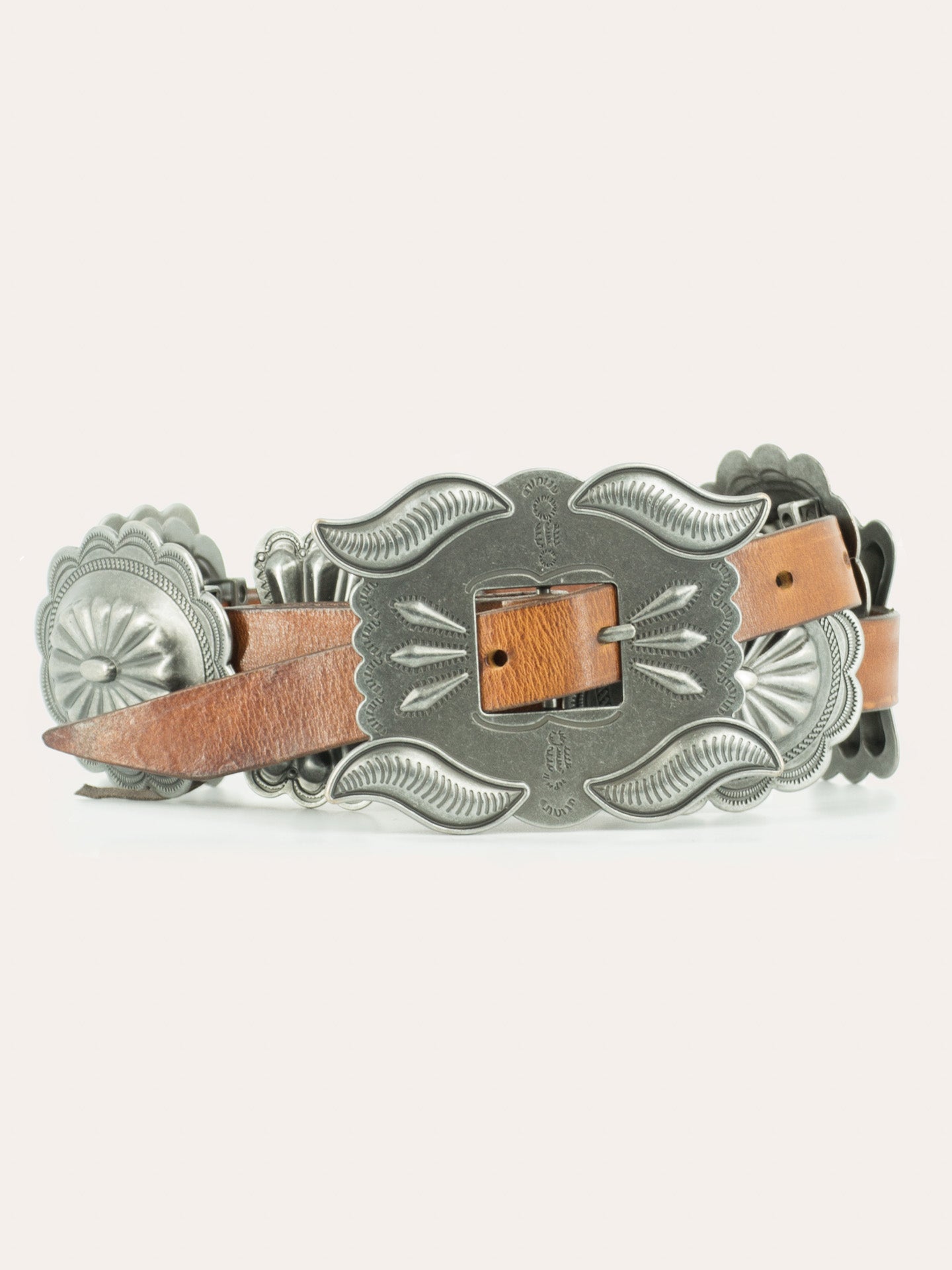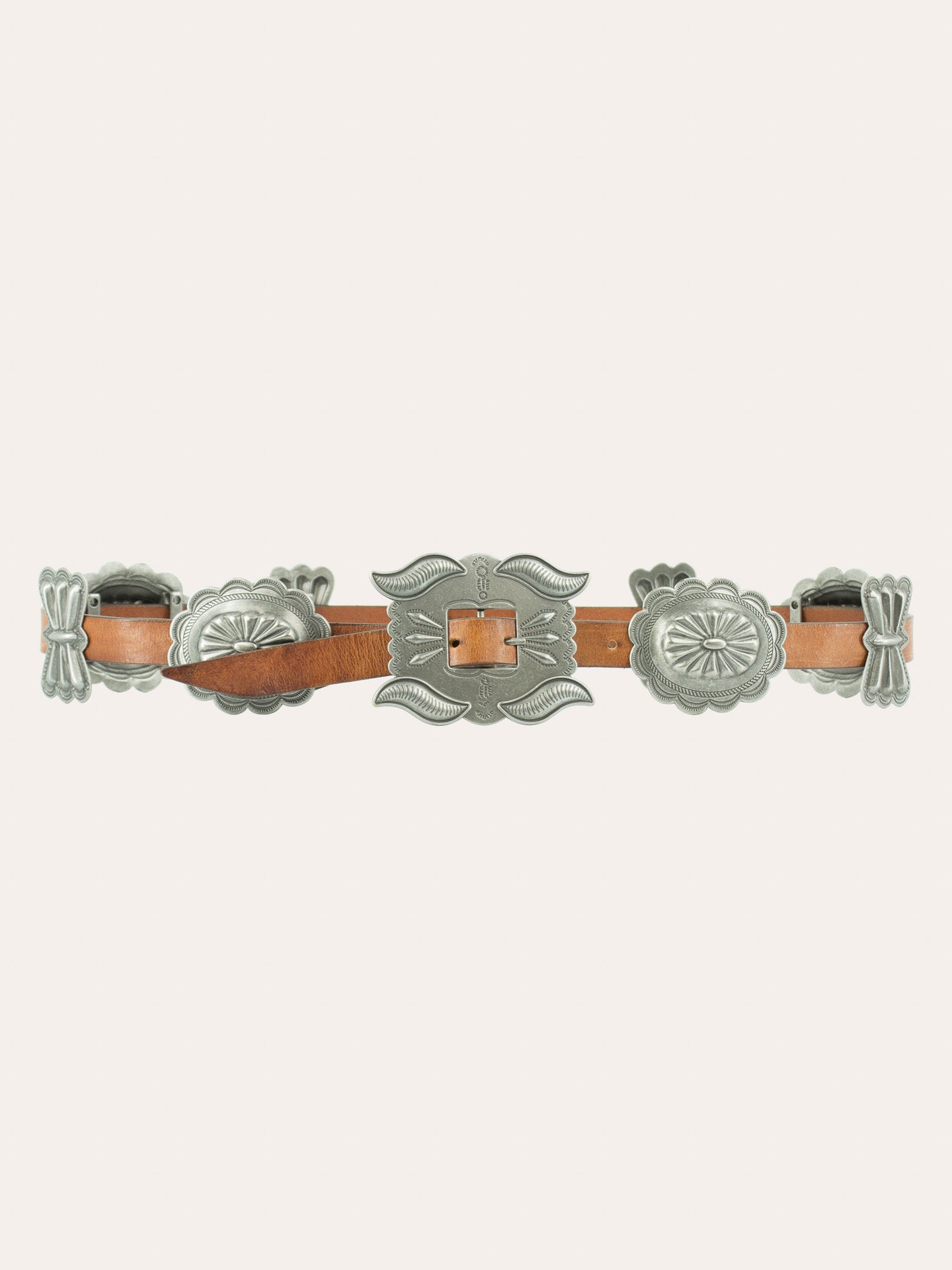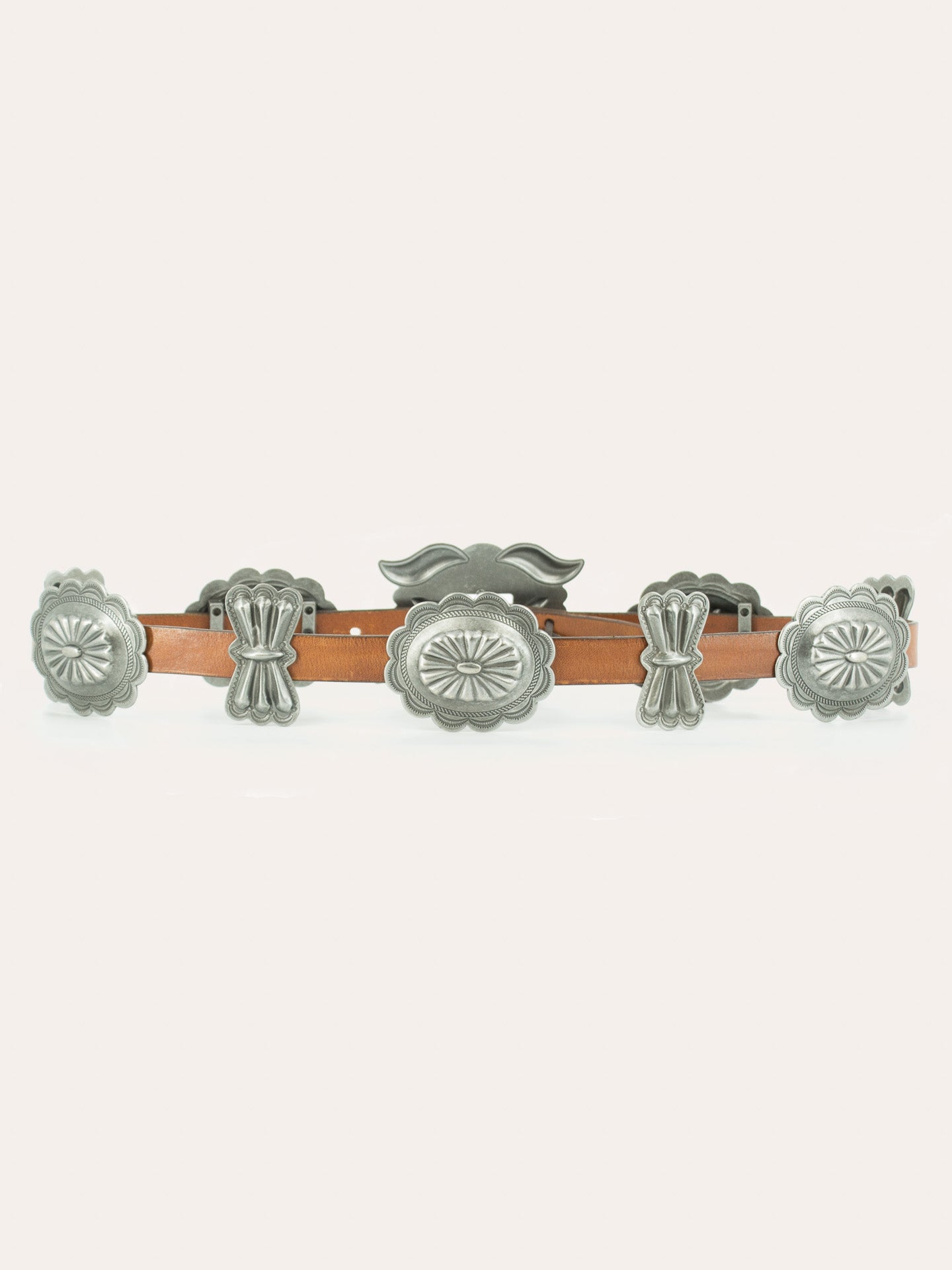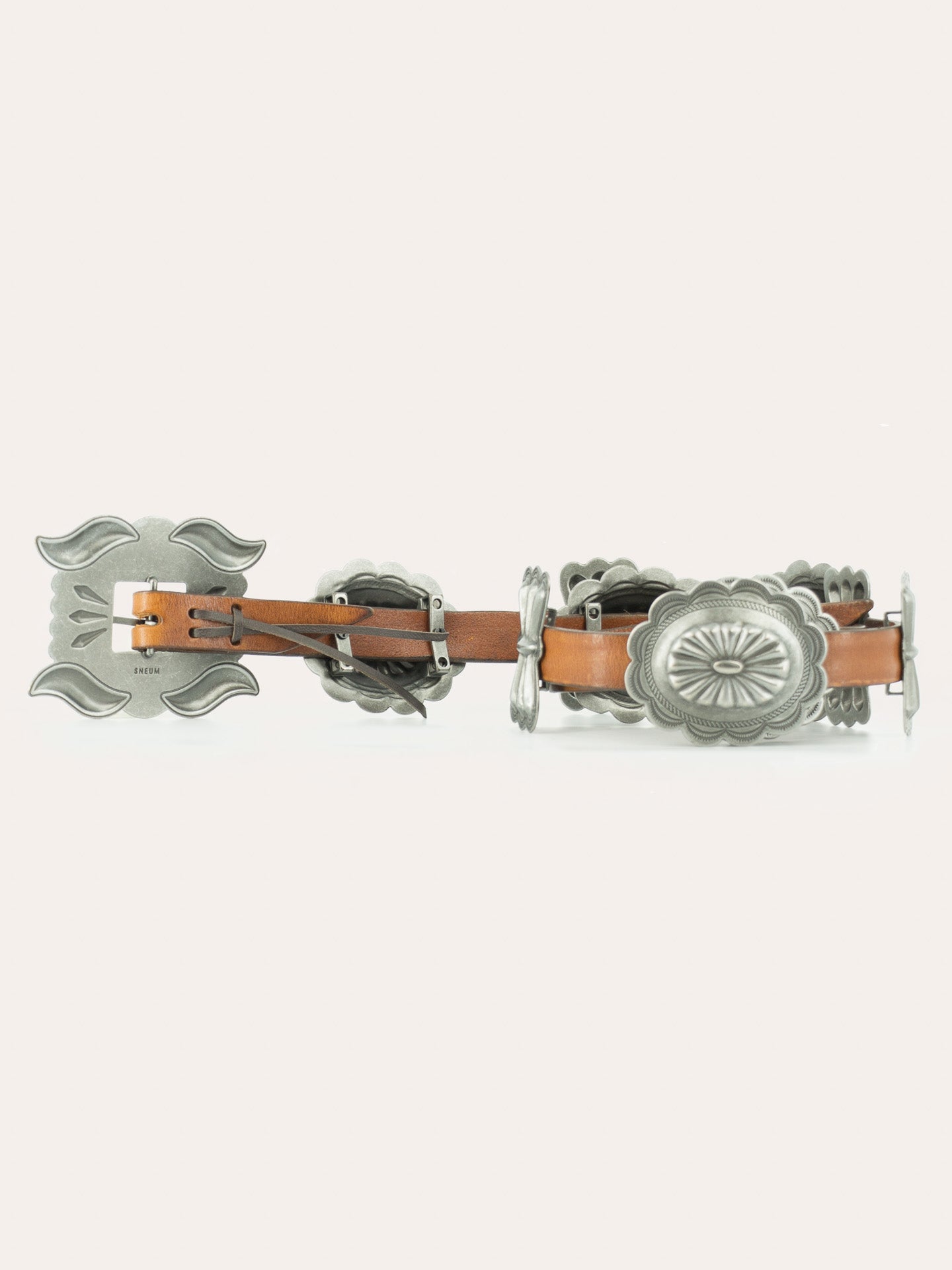Navajo inspired Concho leather belt
Navajo inspired Concho leather belt
SKU:0430303-231102
Couldn't load pickup availability
The Sneum Concho Leather Belt is inspired by those worn and made by Navajo Native Americans of the Southwest. Our version is based on what would be classified as a Phase III belt from around the 1930s and features five large oval conchos and four large butterfly conchos with combination of repoussé and stamping.
The large main buckle has been given the iconic embossed leaf-shapes that are further emphasized by covering their surfaces with stamped impressions.
Both the conchos and main buckle are silver-plated, custom stamped, that will develop a natural patina with age. Likewise they are removable and can be made in to a “regular” belt according to preferences.
Hand made in England, the belt strap has been vegetable-tanned and been given a unique treatment to obtain an aged look which is an intentional feature of the belt and no two straps are completely alike. In addition the strap fastens around the buckle using leather string just like the old original concho belt straps.
Details & care
Details & care
• Belt strap width is 21mm
• Oval conchos measurements are: W: 71,5mm x H: 60mm
• Butterfly conchos measurements are: W: 32,8mm x H: 60mm
• Buckle measurements are: W: 97,4mm x H: 75mm
Size & fit
Size & fit

Share







